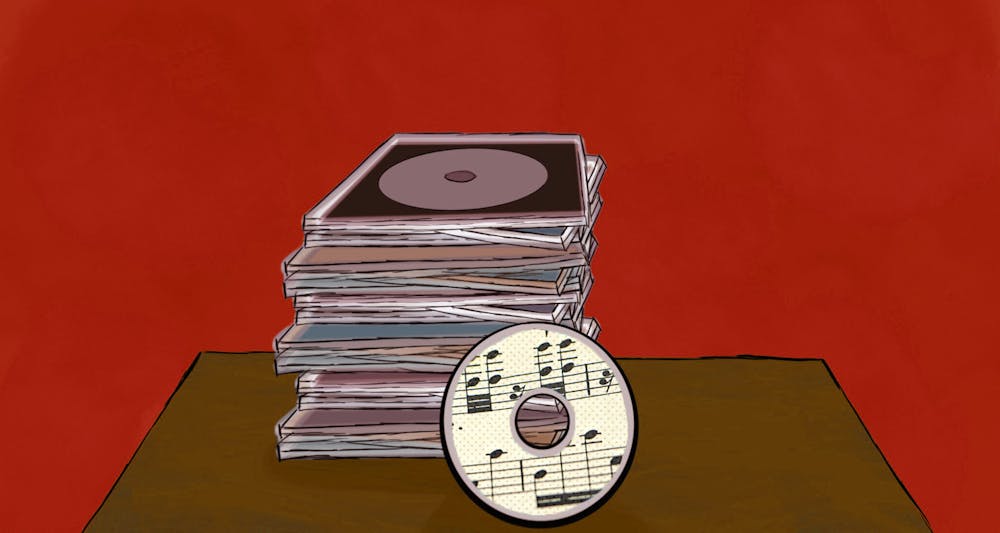It’s more than a month into the semester, and with the first day of fall well into the past, a chill is starting to settle on Grounds. As flannels slowly begin to emerge from closets, listeners will need some music to keep them warm — and what better genre to do so than classical music? Here are four orchestral works to stay cozy to as the colored leaves fall and the autumnal air approaches.
Antonín Dvořák’s “Serenade for Strings in E Major”
A five-movement, 30-minute work for string orchestra, “Serenade for Strings” is a hefty but delightful piece of music. Its first movement introduces a slow, luscious theme in the violins that repeats throughout the piece. In the second movement, Dvořák presents a wistful waltz, supported by interplay between the violins and cellos. The serenade’s third movement opens with a peppy melody later contrasted with long lines in the violins and offbeat patterns in the lower strings.
The fourth movement, “Larghetto,” is the slowest but perhaps richest movement of the serenade. Relying on the lower, darker strings of each instrument, the movement produces an intensely warm sound enriched by the vibrato of the players. The serenade concludes with a driving, rhythmic melody and makes clever use of the first movement’s theme.
A rendition of “Serenade for Strings” by the Netherlands Chamber Orchestra is especially compelling — their sensitive and playful interpretation is certain to keep listeners warm.
“Andante” from Felix Mendelssohn’s Violin Concerto in E Minor
Diverse in its musical techniques and characters, Mendelssohn’s “Violin Concerto” is a classic for any violinist. “Andante,” the concerto’s second movement, despite being technically simple, is an especially warming piece.
After a brief orchestral passage, the spotlight turns to the violinist, who offers a solo that both reaches ambitiously for upper octaves and dwells pensively in lower registers. After a statement of the main melody, the solo shifts to a minor key, maintaining a period of tension before returning to the original theme in a higher octave. The warmth of this piece comes from its simplicity — the melody allows the violin to both shine and, more importantly, to glow.
Violinist Ray Chen delivers an impassioned interpretation of the concerto that will surely keep one toasty.
Alma Deutscher’s “Siren Sounds Waltz”
Unlike the other composers, 18-year-old Alma Deutscher is an artist of the modern era. Accordingly, her “Siren Sounds Waltz” is a series of four waltzes inspired by the sound of traffic in Austria.
The piece begins with a discordant introduction in which the orchestra mimics traffic noises. The upper strings then transition into a section in which they create a warping sound by sliding up and down their strings in unison, which cleverly leads to a lush melody in the violins and flutes. The introduction is followed by four waltzes, the final waltz being perhaps the most notable. Inspired by a police siren that Deustcher heard while in Austria, it beautifully integrates the dissonant sound into a buoyant dance that will wrap one like a blanket.
“Siren Sounds,” played by the Orchestra of St. Luke’s, is perfect for a fall walk down McCormick Road. Hearing the blend of car horns and clarinet harmonies, listeners might just see the beauty — and the warmth — in traffic.
“Pas de deux” from Pyotr Tchaikovsky’s “The Nutcracker”
They say it’s never too early for Christmas music, and that’s certainly true for “Pas de deux.” This piece accompanies a dance between the Sugar Plum Fairy and Prince Coqueluche in Tchaikovsky’s ballet “The Nutcracker.” Although a ballet piece might not seem like a fall classic, it’s certain to offer warmth on a chilly day.
“Pas de deux” is a brilliant work in that, at its core, it’s simply a combination of descending G major and E minor scales. Through skilled orchestration, though, Tchaikovsky manages to infuse these scales with warmth and life. The piece begins with an arpeggio played by a harp, followed by the first statement of scales in the cellos. A transition section led by the oboe paves the way for climactic return to the G major scale in the strings, driven forward by thick chords in the woodwinds and percussion.
For an especially warming interpretation — and an early start to Christmas cheer — look no further than the Mariinsky Theatre Orchestra’s performance of “Pas de deux.”







